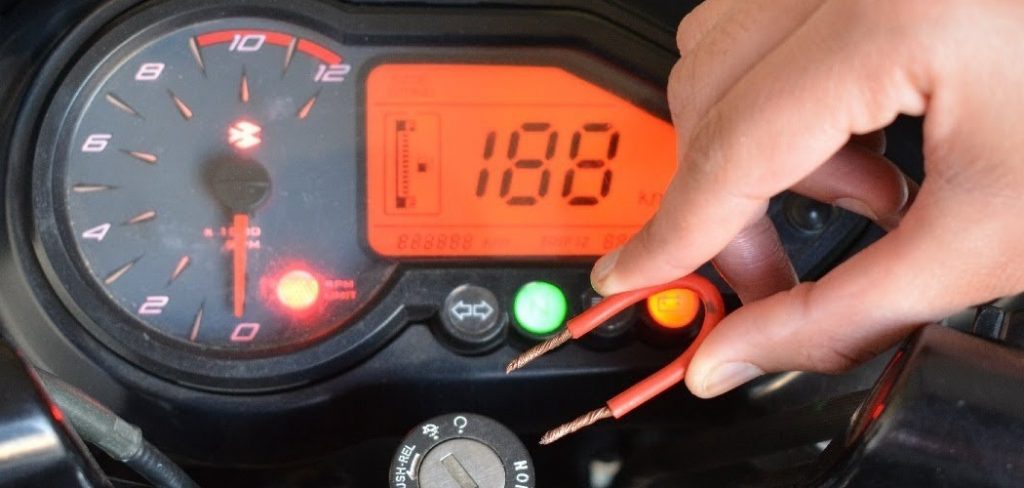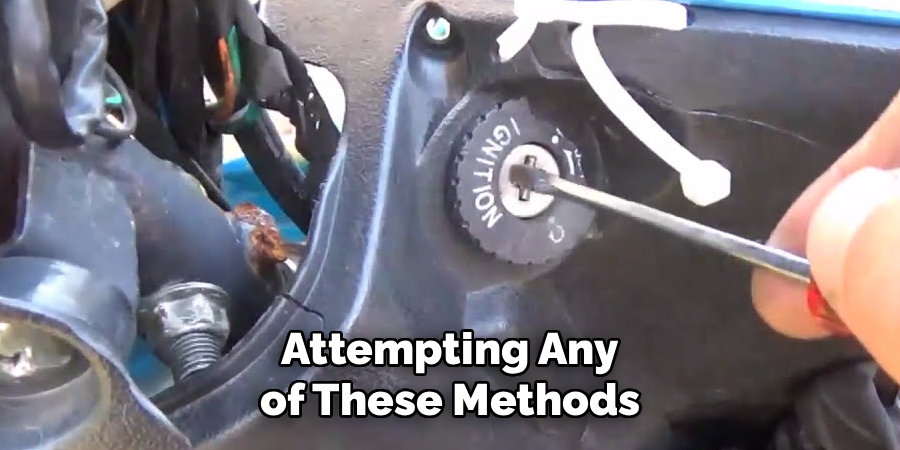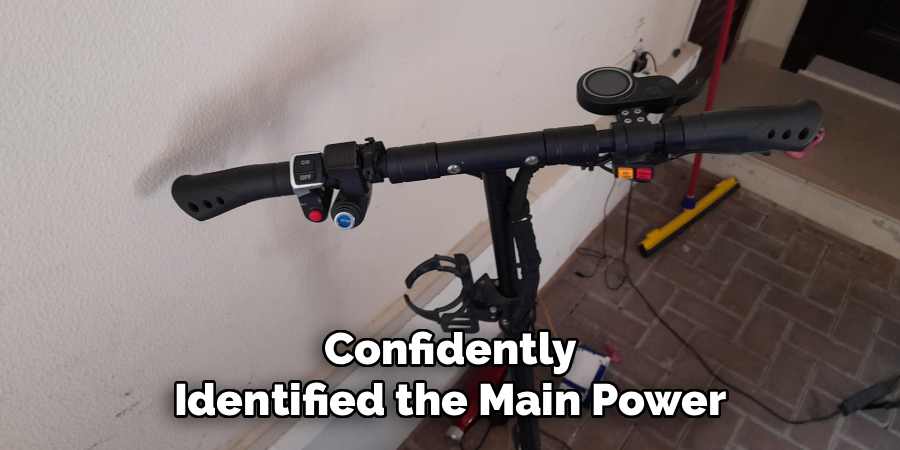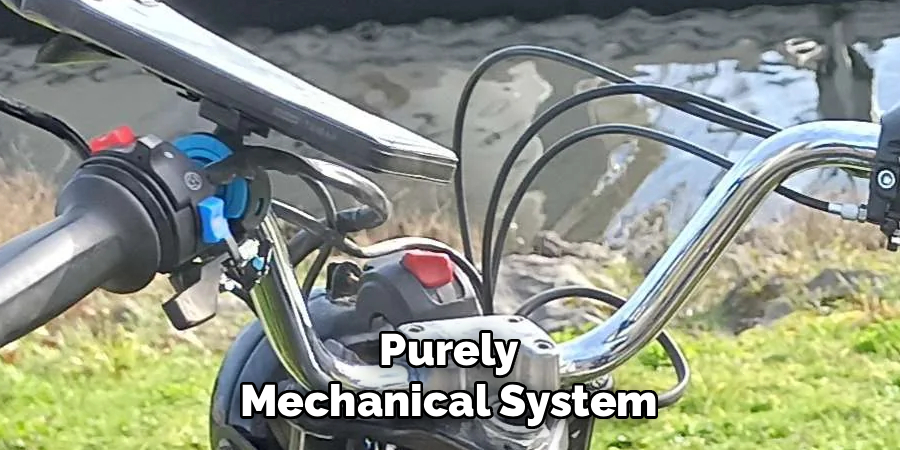Losing the key to your moped is a uniquely frustrating experience, often leaving you feeling stranded and helpless. Whether the key has vanished, broken off in the ignition, or been left behind, the result is the same: your ride is going nowhere. Before you call an expensive locksmith or consider having your moped towed, you should know that there are emergency methods to get it started. This guide is designed for legitimate owners in a bind, providing a clear and responsible walkthrough. This article will show you how to start moped without key, helping you get moving in an emergency situation.

Getting stranded without a key can feel like a frustrating and stressful experience. However, with the right knowledge and a few simple tools, it’s possible to start your moped and continue your day without needing professional intervention. This guide focuses on safe, legal methods for responsible moped owners who find themselves in an unexpected situation. Remember, these steps are intended solely for use on your own vehicle to ensure both ethical and lawful practices.
Why Understanding This Is Important
Knowing how to start your moped without a key can be crucial in emergency situations where you’re unable to access professional assistance immediately. Whether you’ve misplaced your key or accidentally locked it out of reach, having this knowledge ensures you’re not left stranded or vulnerable, especially in unsafe locations. Additionally, understanding the mechanics of your moped empowers you as an owner, helping you respond to unexpected challenges while maintaining control and confidence. However, it’s vital to approach such solutions responsibly, ensuring they align with legal and ethical guidelines.
8 Step-by-Step Guide on How to Start Moped Without Key
Step 1: Confirm Ownership and Assess the Situation

Before attempting any of these methods, it is imperative to confirm that you are the legal owner of the moped. These techniques should only be used in a genuine emergency, like losing your keys far from home. Attempting to start a vehicle you do not own is illegal. Once you’ve established this, assess your moped’s ignition system. You will need some basic tools, like a screwdriver, wire cutters, and electrical tape. This process involves working with the moped’s wiring, so proceed with caution and at your own risk.
Step 2: Access the Ignition Wiring Harness
The brain of your moped’s ignition system is a cluster of wires connected to the back of the key switch. To access this, you will likely need to remove the plastic fairing or housing around the handlebars and steering column. This is typically held on by a few Phillips head screws. Carefully remove the screws and gently pry the plastic pieces apart. Be mindful of any clips or tabs that could break. You will see a bundle of wires running from the back of the ignition cylinder. This is the wiring harness you need to work with.
Step 3: Identify the Ignition Wires
Inside the harness, you will find several colored wires. On most mopeds, you are looking for two specific wires: the primary power wire (often red) and the ignition wire (often black, but sometimes black with a white stripe). The function of the key is simply to connect these two wires, completing the circuit and sending power to the moped’s electrical components. It is helpful to search online for a wiring diagram specific to your moped’s make and model to be certain, as colors can vary. Other wires, like green (ground) or others for lights, can usually be ignored.
Step 4: Cut and Strip the Power and Ignition Wires
Once you have confidently identified the main power and ignition wires, you will need to bypass the key switch. Using wire cutters, carefully cut both the power (red) and ignition (black) wires, leaving yourself enough length on both ends to work with. After cutting them, use a wire stripper or a sharp knife to carefully remove about half an inch of the plastic insulation from the ends of the wires coming from the moped’s main harness. This will expose the copper strands inside, allowing you to create a new connection.

Step 5: Connect the Wires to Power the Moped
This is the moment that replaces the action of turning a key. Take the two stripped ends of the power and ignition wires that are coming from the moped itself (not the short ends connected to the ignition cylinder) and twist the exposed copper strands together firmly. This “hotwiring” process completes the main electrical circuit. When these wires touch, you should see the moped’s dashboard lights turn on, just as they would if you had turned the key to the “ON” position. This confirms you have connected the correct wires.
Step 6: Secure the Connection and Start the Engine
Once the dashboard lights are on, you need to make sure the wire connection is secure and will not come apart while you are riding. Wrap the twisted wires tightly with electrical tape to insulate the connection and prevent it from shorting out against the frame or other wires. With the power now on, you can start the moped as you normally would. Pull the brake lever and press the electric start button, or use the kick-starter. The engine should now start. Be aware that the moped will remain “on” until you disconnect these wires.
Step 7: Kill Switch and Steering Lock
Remember to check the kill switch on the handlebar, which is usually a red toggle switch. If this switch is in the “off” position, the moped will not start even if you have wired it correctly. Also, be aware of the steering lock. If you locked the handlebars when you removed the key, you will not be able to steer. Bypassing the ignition wiring does not disengage the physical steering lock. In this situation, you will need to call a locksmith, as forcing the lock will cause significant damage to your moped’s frame and steering column.

Step 8: Disconnect to Turn Off and Seek a Permanent Solution
To turn the moped off, you cannot simply use the kill switch, as the main power circuit is still connected. You must untwist the wires that you connected earlier. This is your new “off” switch. This entire process is a temporary, emergency solution. As soon as possible, you need to seek a permanent fix. This involves ordering a new ignition cylinder and key set for your moped model and having it professionally installed, or installing it yourself if you are comfortable with the task. Riding a hotwired moped long-term is unsafe and not recommended.
Emergency Bypass Method Risks
While an emergency bypass method, such as hotwiring, might seem like a quick solution, it comes with significant risks. First and foremost, bypassing the ignition system can compromise the overall electrical integrity of the moped, potentially causing damage to other components like fuses or wiring.
Without a proper ignition system, the moped becomes easier to steal, leaving it vulnerable to theft. There’s also the possibility of personal injury if the bypass is not performed correctly, as improper handling of electrical systems can result in electric shocks or short circuits. Lastly, extended use of a hotwired system could lead to further mechanical issues, increasing repair costs. Therefore, this method should only be employed as a temporary solution in emergencies.
Frequently Asked Questions (FAQs)
Is It Legal to Start a Moped Without a Key?
It is only legal if you are the verified owner of the moped and are doing so in a genuine emergency. Starting a vehicle you do not own is considered theft and carries serious legal consequences. This guide is intended for owners who have lost their keys and need to move their own property. Always be prepared to prove ownership if questioned.
Will This Method Damage My Moped?
If done carefully, this method should not damage the primary electrical system of your moped. However, there is always a risk of shorting a wire or damaging the plastic fairings during removal. The biggest risk is connecting the wrong wires, which could blow a fuse. The safest long-term solution is always to replace the ignition switch and use a proper key.
What if My Moped’s Wires Are a Different Color?
Wire colors can vary between manufacturers and even models. While red for power and black for ignition is a common combination, it is not universal. The most reliable way to be certain is to find a wiring diagram for your specific moped’s make, model, and year. You can often find these in online forums or in a service manual for your vehicle.
This Method Doesn’t Disengage My Steering Lock. What Do I Do?
The steering lock is a separate, purely mechanical system that is not connected to the electronic ignition. Bypassing the ignition wires will not unlock the handlebars. If your steering is locked, do not try to force it, as this will cause significant damage. Your only option in this situation is to contact a professional locksmith who has the tools to address the lock itself.

How Do I Get a New Key for My Moped?
The best way is to contact a dealership or a locksmith. You will need your moped’s Vehicle Identification Numbe and proof of ownership. A dealership may be able to cut a new key based on the VIN. A locksmith can also create a new key, or you can order a complete new ignition cylinder and key set and have it installed.
Conclusion
Losing your moped key can feel like a disaster, but it doesn’t have to leave you stranded. By understanding the basic principles of your moped’s ignition system, you can use an emergency bypass method to get it started and move it to a safe location.
This process involves accessing the ignition wires, identifying the correct pair, and connecting them to complete the circuit. While this is an invaluable skill for an emergency, remember it is a temporary fix. The ultimate goal is to get a new key or ignition switch for a safe, permanent solution. With this guide on how to start moped without key, you are now prepared to handle an unexpected key loss with confidence.
About
Safety Fic is a distinguished figure in the world of Diy design, with a decade of expertise creating innovative and sustainable Diy solutions. His professional focus lies in merging traditional craftsmanship with modern manufacturing techniques, fostering designs that are both practical and environmentally conscious. As the author of diy, Safety Fic delves into the art and science of Safety Fic-making, inspiring artisans and industry professionals alike.
Education RMIT University
(Melbourne, Australia) Associate Degree in Design (Safety Fic) Focus on sustainable design, industry-driven projects, and practical craftsmanship. Gained hands-on experience with traditional and digital manufacturing tools, such as CAD and CNC software.
Nottingham Trent University
(United Kingdom) Bachelor’s in diyfastly.com and Product Design (Honors) Specialized in product design with a focus on blending creativity with production techniques. Participated in industry projects, working with companies like John Lewis and Vitsoe to gain real-world insights.
Publications and Impact
In diy, Safety Fic his insights on indoor design processes, materials, and strategies for efficient production. His writing bridges the gap between artisan knowledge and modern industry needs, making it a must-read for both budding designers and seasoned professionals.
